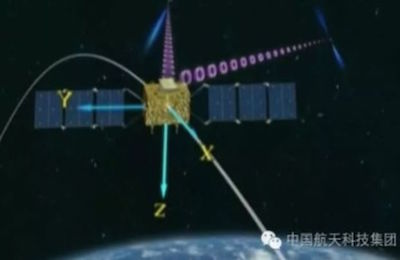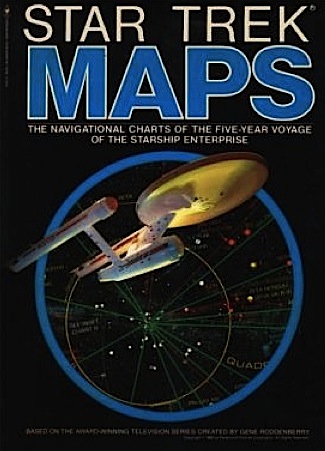Science Fiction
Dictionary
A B C D E F G H I J K L M N O P Q R S T U V W X Y Z
China's XPNAV 1 To Use X-Ray Pulsars For Navigation

China just launched XPNAV 1, the world's first x-ray navigation system. The X-ray Pulsar Navigation satellite, which the country launched on Nov. 10 aboard a solid-fueled Long March 11 rocket from the Jiuquan Space Launch Center in the Gobi Desert,

(XPNAV-1 X-ray Pulsar Navigation satellite)
The navigation system relies on x-ray pulsars found in systems with two stars. Essentially a dense neutron star's strong magnetic field pulls in gas from the other star, and when the gas impacts the neutron star, it generates a strong X-ray hotspot. If the neutron star's spin axis and magnetic axis are not aligned, as the neutron star rotates, pulses will be generated as the X-ray hotspots move in and out of the observer's view. This turns out to be a useful tool for navigation.Millisecond pulsars generate x-ray pulses at such short intervals, that by measuring the time differential from multiple known pulsars (like a GPS using pulsars instead of satellites), a spacecraft can determine its location in the solar system within 5 kilometers (3.1 miles), which is pretty good for deep space. The trick is to find pulsars that provide pulses at a consistent pace; x-ray pulsars often speed up or slow down the frequency of their bursts.
If all goes as planned, the XPNAV 1 will both gather data to build the pulsar x-ray database and then be able to use that data to independently verify its location.
Science fiction writers of the 1950's were fascinated by this idea. In his 1952 story Troubled Star, George O. Smith described space beacons:
"And what is a beacon?""It is a phenomenon caused by the Doppler effect when traveling at galactic speeds. In this case, when coming through this rift at fifteen hundred light years per hour, a three-day variable star will appear to the observer as a rapidly blinking light..."
"We use the three-day variable to denote the galactic travel lanes. Very effective.
(Read more about Smith's space beacon)
In his 1956 story The Repairman, Harry Harrison described a hyperspace beacon:
Every beacon has a code signal as part of its radiation and represents a measurable point in hyperspace. Triangulation and quadrature works for navigation - only it follows its own rules.For a hyperspace jump, you need at least four beacons for an accurate fix.
(Read more about Harrison's hyperspace beacon)
In 1980, Star Trek Maps was published; it consisted of a set of four maps and an Introduction to Navigation booklet. In the accompanying pamphlet, they described the standard navigation system using "sub-space beacons", and then described the emergency system that used pulsars as a GPS system. It included the real equations as well.

(Star Trek Maps: galactic coordinates and basic vector calculus)
XPNAV 1 is the world's first x-ray navigation system to go in orbit. NASA's Station Explorer for X-ray Timing and Navigation Technology (SEXTANT), will not be installed on the ISS until 2017.
Via PopSci.
Scroll down for more stories in the same category. (Story submitted 11/15/2016)
Follow this kind of news @Technovelgy.| Email | RSS | Blog It | Stumble | del.icio.us | Digg | Reddit |
Would
you like to contribute a story tip?
It's easy:
Get the URL of the story, and the related sf author, and add
it here.
Comment/Join discussion ( 0 )
Related News Stories - (" Space Tech ")
Will Space Stations Have Large Interior Spaces Again?
'They filed clumsily into the battleroom, like children in a swimming pool for the first time, clinging to the handholds along the side.' - Orson Scott Card, 1985.
Reflect Orbital Offers 'Sunlight on Demand' And Light Pollution
'I don't have to tell you about the seven two-mile-diameter orbital mirrors...'
Chrysalis Generation Ship to Alpha Centauri
'This was their world, their planet ó
this swift-traveling, yet seemingly moveless vessel.' - Nat Schachner, 1934
The First Space Warship For Space Force
'Each of the electrical ships carried about twenty men...' - Garrett P. Serviss, 1898.
Technovelgy (that's tech-novel-gee!) is devoted to the creative science inventions and ideas of sf authors. Look for the Invention Category that interests you, the Glossary, the Invention Timeline, or see what's New.
Science Fiction
Timeline
1600-1899
1900-1939
1940's 1950's
1960's 1970's
1980's 1990's
2000's 2010's
Current News
Leader-Follower Autonomous Vehicle Technology
'Jason had been guiding the caravan of cars as usual...'
Golf Ball Test Robot Wears Them Out
"The robot solemnly hit a ball against the wall, picked it up and teed it, hit it again, over and again...'
Boring Company Vegas Loop Like Asimov Said
'There was a wall ahead... It was riddled with holes that were the mouths of tunnels.'
Rigid Metallic Clothing From Science Fiction To You
'...support the interior human structure against Jupiterís pull.'
Is The Seattle Ultrasonics C-200 A Heinlein Vibroblade?
'It ain't a vibroblade. It's steel. Messy.'
Roborock Saros Z70 Is A Robot Vacuum With An Arm
'Anything larger than a BB shot it picked up and placed in a tray...'
A Beautiful Visualization Of Compact Food
'The German chemists have discovered how to supply the needed elements in compact, undiluted form...'
Bone-Building Drug Evenity Approved
'Compounds devised by the biochemists for the rapid building of bone...'
Secret Kill Switch Found In Yutong Buses
'The car faltered as the external command came to brake...'
Inmotion Electric Unicycle In Combat
'It is about the size and shape of a kitchen stool, gyro-stabilized...'
Grok Scores Best In Psychological Tests
'Try to find out how he ticks...'
PaXini Supersensitive Robot Fingers
'My fingers are not that sensitive...'
Congress Considers Automatic Emergency Braking, One Hundred Years Too Late
'The greatest problem of all was the elimination of the human element of braking together with its inevitable time lag.'
The Desert Ship Sailed In Imagination
'Across the ancient sea floor a dozen tall, blue-sailed Martian sand ships floated, like blue smoke.'
The Zapata Air Scooter Would Be Great In A Science Fiction Story
'Betty's slapdash style.'
Thermostabilized Wet Meat Product (NASA Prototype)
There are no orbiting Michelin stars. Yet.
